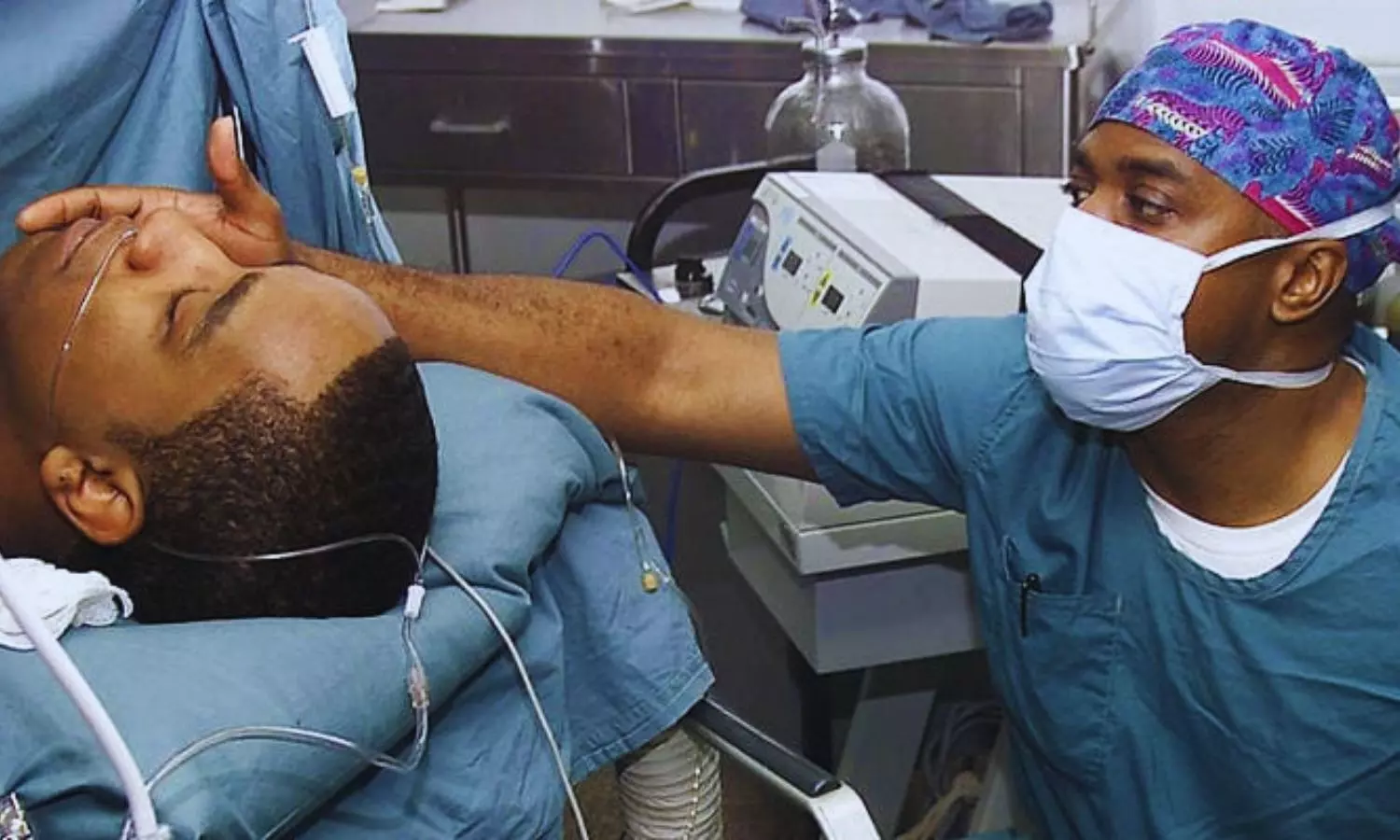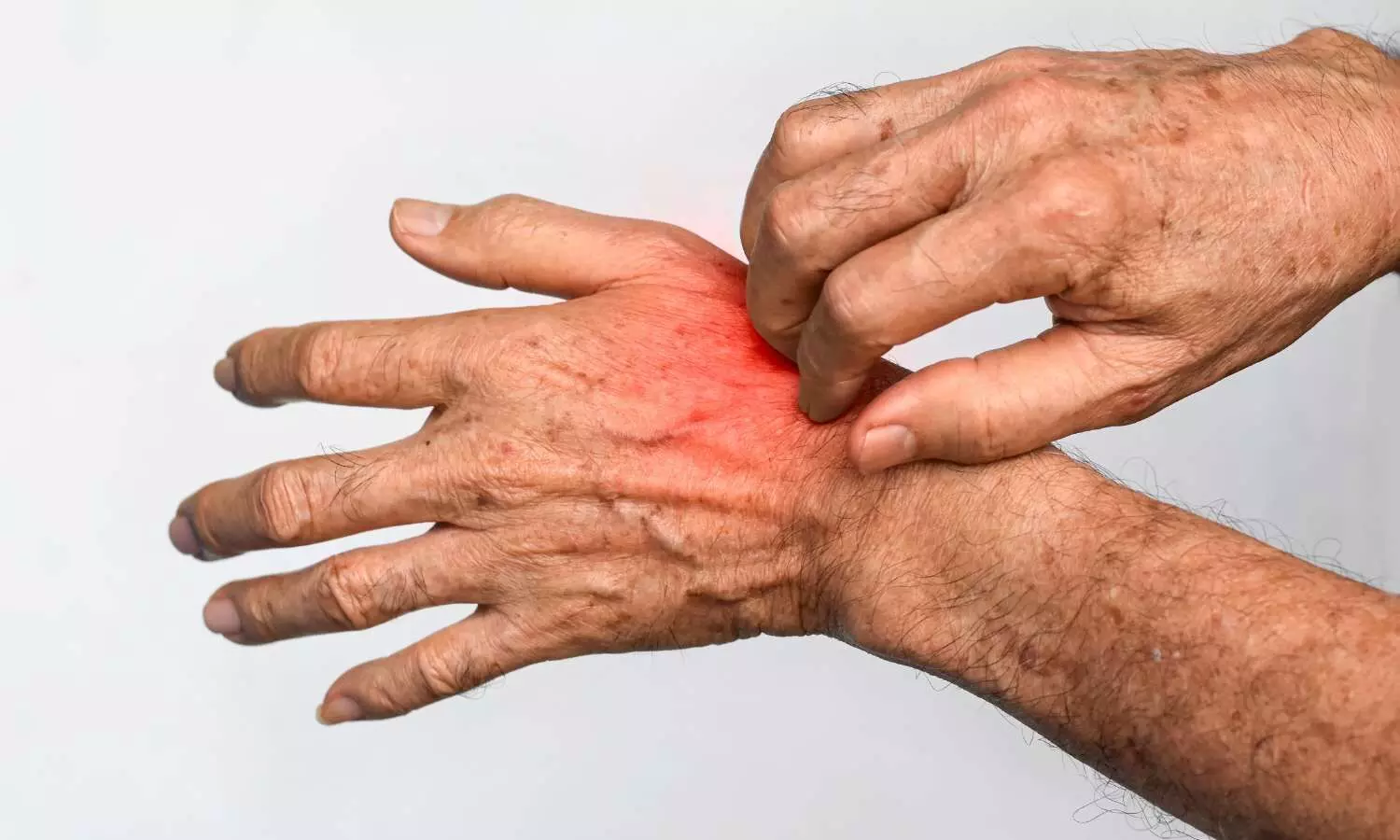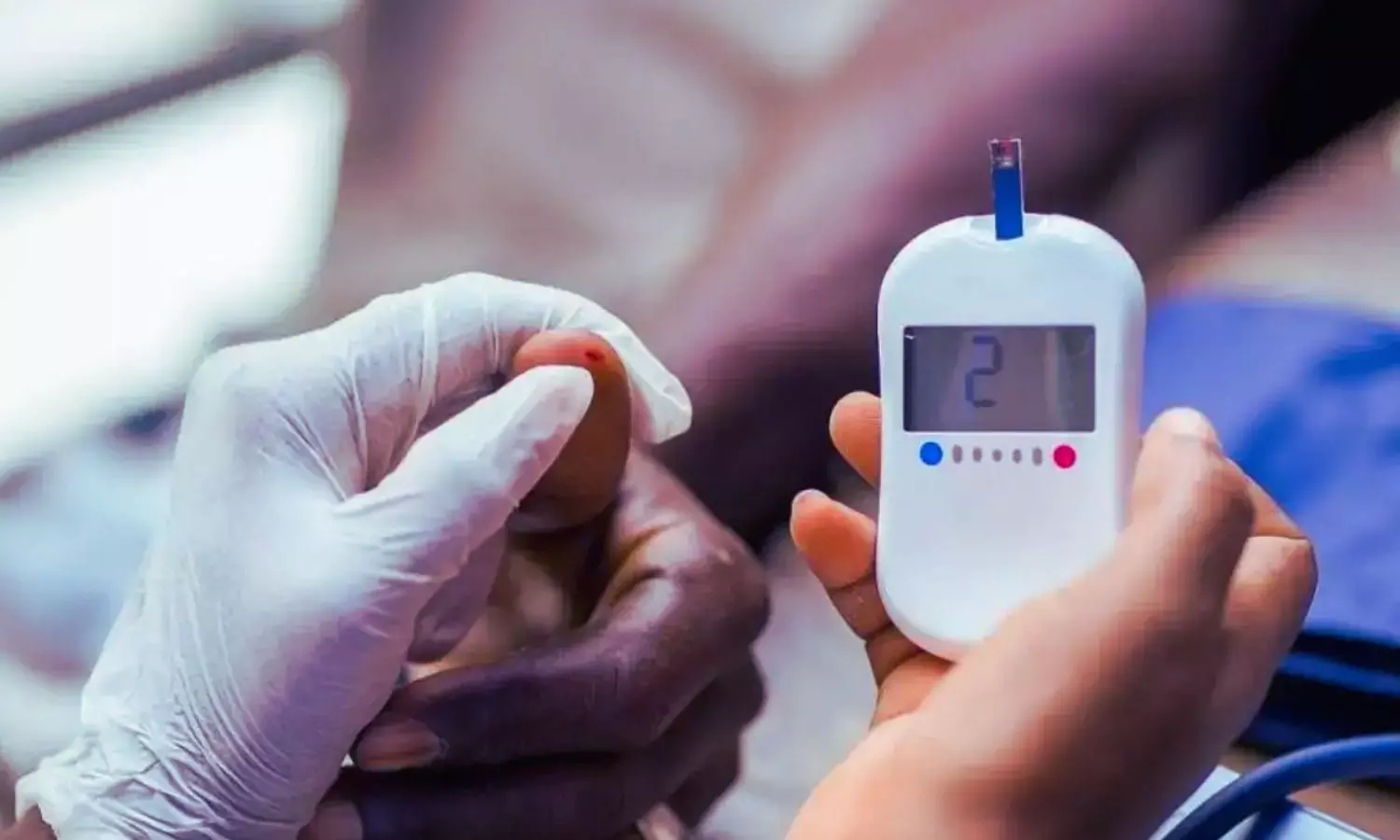Estimates predict over 4 million missing people who would be alive in 2025 if not for inadequate type 1 diabetes care
Powered by WPeMatico
Powered by WPeMatico

Netherlands: Midazolam sedation can noticeably restrict the natural adaptability of breathing, while s-ketamine largely preserves it, a recent randomized controlled pilot study published in PLOS ONE has shown.
Powered by WPeMatico

China: Researchers have found in new research that lower hemoglobin glycation index (HGI) values are associated with increased short- and long-term mortality among critically ill patients. Hemoglobin glycation index may be a useful prognostic biomarker for risk stratification in intensive care unit (ICU) settings.
The study, led by Benji Wang from the Department of Anesthesiology, Critical Care and Pain Medicine at The Second Affiliated Hospital and Yuying Children’s Hospital of Wenzhou Medical University, Zhejiang, China, was recently published in the Journal of Health, Population and Nutrition. It sheds new light on the importance of glycemic variation, particularly HGI, in influencing patient outcomes in the ICU.
Although glycemic variability has been increasingly acknowledged as a determinant of outcomes in critical care, the specific prognostic value of the hemoglobin glycation index has not been thoroughly explored before. This study aimed to bridge that gap by examining the relationship between HGI and all-cause mortality among ICU patients.
Using data from the MIMIC-IV database—a large, publicly available critical care database—the researchers conducted a retrospective cohort analysis involving 9,695 ICU patients. They assessed mortality outcomes at 30, 90, and 365 days, with in-hospital mortality as an additional outcome. Advanced statistical methods, including Kaplan-Meier survival analysis, Cox proportional hazards models, restricted cubic spline (RCS) modeling, and propensity score matching (PSM), were employed to ensure the validity and robustness of the findings.
The key findings of the study were as follows:
According to the authors, the study is the first large-scale investigation to evaluate HGI as a mortality predictor among critically ill patients. The researchers propose that HGI could serve as an effective and easily accessible biomarker to guide individualized glycemic management and risk assessment in ICU settings.
The authors concluded, “The findings point toward a meaningful link between low HGI and increased mortality in critical care, reinforcing the potential utility of HGI in clinical decision-making and ICU patient stratification.”
Reference:
Pan, L., Lu, F., Cheng, B. et al. Association between hemoglobin glycation index and mortality in critically ill patients: a retrospective cohort study. J Health Popul Nutr 44, 249 (2025). https://doi.org/10.1186/s41043-025-01008-9
Powered by WPeMatico

A new international study presented today at the European Academy of Dermatology and Venereology (EADV) Congress 2025 reveals that adults with atopic eczema (AE) are significantly more likely to experience suicidal thoughts, with researchers uncovering the key factors driving this elevated risk.
As one of the largest global investigations to examine the link between AE and suicidal ideation, the “Scars of Life” study surveyed 30,801 adults across 27 countries in 2024. Among them, 15,223 were adults with physician-confirmed current AE, while 7,968 adults without AE served as controls.
Participants with current AE were grouped by age of AE onset – childhood, adolescence, or adulthood – and completed a detailed online questionnaire capturing sociodemographic information, self-reported suicidal ideation, severity of itch and skin pain, AE severity, and experiences of skin-related stigmatisation.
The results showed that 13.2% of adults with AE reported suicidal ideation, compared with 8.5% of adults without AE. All AE subgroups – whether the condition began in childhood, adolescence, or adulthood – had higher odds of suicidal ideation than controls, highlighting the widespread mental health burden of the condition.
Atopic eczema, a chronic inflammatory skin condition affecting more than 200 million people worldwide, is characterised by recurring episodes of dry, itchy and inflamed skin.2,3 Beyond the physical symptoms, its impact on mental health is increasingly recognised, with many experiencing anxiety, depression, and social stigma, alongside the daily challenges of managing their condition.4
Importantly, the study identified several factors strongly associated with suicidal ideation in adults with AE. Younger adults, particularly those under 30, were more likely to report suicidal thoughts (OR=1.6), as were individuals with obesity (OR=1.29).
Clinical features also played a major role: moderate-to-severe AE doubled the odds of suicidal ideation (OR=2.01), while pruritus (itching), skin pain, and high overall symptom intensity were all significantly associated with increased risk.
Psychosocial and sleep factors further contributed to risk. Adults with suicidal thoughts reported higher levels of stigmatisation and more prevalent sleep disorders, with mixed insomnia – difficulty falling and staying asleep – notably linked to suicidal ideation (OR=1.78).
Dr Delphine Kerob, one of the lead researchers, commented, “These findings reveal a critical insight from our large-scale study, which seeks to uncover the hidden, long-term impact of living with common inflammatory skin conditions such as atopic eczema.”
“The results highlight that the effects of atopic eczema are more than skin deep, with suicidal thoughts representing a serious and frequent concern that is often overlooked by healthcare professionals,” she continued. “By identifying the main risk factors behind suicidal ideation in this population, we hope this study will help healthcare professionals better recognise and address these challenges, supporting patients’ overall well-being more effectively.”
Discussing the next steps for research, Dr Kerob said, “Looking ahead, we are investigating why suicidal ideation occurs at different rates across countries, which may reflect important cultural differences. At the same time, ongoing analyses from the “Scars of Life” study are enhancing our understanding of what happens beneath the surface in patients with atopic eczema.”
Reference:
Beyond the surface: Atopic eczema linked to significantly higher risk of suicidal thoughts, major study finds, Beyond, Meeting: EADV Congress 2025
Powered by WPeMatico

A new study published in the American Journal of Respiratory and Critical Care Medicine found that the combination of elexacaftor, tezacaftor, and ivacaftor significantly improved blood glucose regulation in cystic fibrosis patients with abnormal glucose tolerance. Over 48 weeks, patients showed reductions in 2-hour blood glucose and A1C levels, with no safety concerns.
Multiple organs are impacted by the hereditary disease known as cystic fibrosis (CF), with the pancreas and lungs being especially susceptible. Abnormal glucose metabolism, which includes reduced glucose tolerance and cystic fibrosis-related diabetes (CFRD), is a frequent consequence of CF that has a substantial influence on the health and prognosis of patients. Treatment has been transformed by the advent of cystic fbrosis transmembrane conductance regulator (CFTR) modulator medications, especially the triple combination of Ivacaftor, Tezacaftor, and Elexacaftor, which improves lung function and slows the course of the illness.
Recent data indicates that these treatments could possibly affect glucose control and pancreatic function. It is crucial to comprehend how Elexacaftor, Tezacaftor, and Ivacaftor affect glucose tolerance since better glycemic management can improve nutritional status, lower complications, and improve CF patients’ quality of life. Thus, this research assessed how Elexacaftor/tezacaftor/ivacaftor (ELX/TEZ/IVA) affected glucose tolerance in CF patients with IGT or CFRD.
The participants who were ≥12 years old, heterozygous for F508del and a minimal function CFTR mutation, and who had either IGT or CFRD were given ELX/TEZ/IVA for 48 weeks as part of this trial. ELX/TEZ/IVA was administered to 69 volunteers. Blood glucose levels after a 2-hour oral glucose tolerance test (OGTT) were the main outcome.
The individuals’ mean change was -35.0 mg/dL (95%CI:-49.2,-20.7; P<0.0001) (-1.9 mmol/L [95%CI: 2.7, 1.2]) from baseline to the average of Weeks 36 and 48. The percentage of patients who improved in their dysglycemia classification (CFRD, IGT, and normal glucose tolerance) at Week 48 and safety were secondary objectives.
At Week 48, dysglycemia classification improved for 37.7% (95%CI:24.8,52.1) of participants with impaired glucose tolerance at baseline. When compared to 13.0% at baseline, 35.5% of patients had normal glucose tolerance by Week 48. Safety was in line with ELX/TEZ/IVA’s defined safety profile.
Overall, important within-group reductions in blood glucose levels after OGTT and better dysglycemia classification in CF patients with early IGT or CFRD were among the clinically important improvements in blood glucose management brought about by ELX/TEZ/IVA medication.
Source:
Durieu, I., Clements, B., Fabrizzi, B., Mall, M. A., McKone, E., Ramsey, B., Tullis, E., Taylor-Cousar, J. L., van der Meer, R., Bachman, E., Chin, A., Conner, S., Jennings, M., Weinstock, T., Colombo, C., & Robinson, P. (2025). Impact of elexacaftor/tezacaftor/ivacaftor on glucose tolerance and abnormal glucose metabolism: A phase 3b, open-label clinical trial. American Journal of Respiratory and Critical Care Medicine. https://doi.org/10.1164/rccm.202411-2312OC
Powered by WPeMatico

USA: A Mayo Clinic investigation has revealed that diabetes is the strongest predictor of non-alcoholic steatotic liver disease (SLD) in adults who are not overweight. The research shows that lean individuals with SLD share metabolic and genetic traits that fall between those of healthy lean people and patients with obesity-related SLD, highlighting the need for careful screening even when body weight is normal.
Powered by WPeMatico

New Delhi: The Supreme Court has expressed concerns about reserving seats for transgender candidates in the upcoming NEET-PG 2025 admissions, saying it could create uncertainty in the process.
During the hearing, Chief Justice B.R. Gavai and Justice K Vinodchandran remarked, “We cannot keep seats everywhere in limbo, you are saying two seats in the All India Quota, 2 in the state quota.”
The comments came while the apex court was considering a plea seeking allocation of two seats in the All India Quota and one each in Tamil Nadu and Andhra Pradesh for transgender candidates.
Also read- SC to hear plea on Transgender reservation in PG medical education on September 18
Senior Advocate Indira Jaising, representing the petitioners, urged the court to pass an ‘innocuous order’ allotting these seats as an interim relief ahead of counselling.
She argued that despite the judgment in NALSA v. Union of India, which recognised the rights of transgender persons, the Union and the States have not provided reservations for them in NEET-PG admissions.
As per Live Law report, the petitioners, who belong to the transgender community, prayed for a direction that the respondents issue a fresh admission notice providing for compartmentalised horizontal reservation for transgender persons (including them) by reserving 1% seats in each vertical category.
Under the horizontal quota, transgender individuals, irrespective of whether they belonged to SC, ST, OBC, or general categories, would get the benefit of reservation on account of their belonging to the third gender.
During the proceedings, Jaising informed the court that Kiran A.R. (petitioner 1) withdraws from the case and only petitioners 2 and 3, who belong to the OBC and general categories respectively, would be pursuing the plea.
Appearing for the Union government and the medical authorities, Additional Solicitor General Archana Pathak Dave said Solicitor General Tushar Mehta wished to personally address the larger issue on the reservation of transpersons. However, Mehta was not present in today’s hearing. Therefore, she requested that the matter be kept for next week, i.e on September 23.
Disagreeing with Jaising’s submission and accepting Pathak’s request, the bench said, “Counselling has not started. We will keep this matter for next week high on board.”
The bench noted the submission of the National Medical Commission counsel, who said counselling for admissions in PG courses hadn’t yet begun and said no immediate urgency was required for such an order.
The Supreme court previously said that if there was a top court order for granting quota to transgender persons, then it should be followed. Jaising said one of the issues was whether the quota for third gender persons would be horizontal or not.
According to Jaising, both petitioners had written the entrance exams, but ambiguity persisted over the cut-off marks applicable in case of transgender reservation being recognised.
Also read- Non-inclusion of disability, transgender rights in CBME Curriculum: Centre serves notice to NMC
Powered by WPeMatico

Imphal: The worsening flash flood situation in Manipur has led to the emergency evacuation of patients from the state’s premier government hospital, Jawaharlal Nehru Institute of Medical Sciences (JNIMS) in Imphal. The unprecedented rise in water levels within and around the hospital complex prompted authorities to issue an immediate evacuation order for all inpatients.
Also Read:Odisha Govt sends health teams to Flood-Hit districts
According to NDTV, “In the interest of patient safety, all current inpatients are to be evacuated from the hospital wards with immediate effect. Additionally, no new admissions will be accepted until further notice. The decision aims to ensure the well-being and safety of patients amidst the challenging situation,” the JNIMS statement said.
The order was signed by JNIMS Medical Superintendent Lokeshwar Singh with approval from higher authorities, reports Zee News.
The flash flooding was triggered by continuous torrential rainfall, leading to the breach of the Iril River at Kshetri Awang Leikai in Imphal East district early Monday morning. As of the latest reports, more than 5,000 households have been inundated and several hectares of cultivated land destroyed across Imphal East and Thoubal districts. Disruption of transport infrastructure, including landslides and road closures, has further complicated emergency response efforts.
The India Meteorological Department (IMD) has forecast light to moderate rain and thunderstorms at most places in Assam, Meghalaya, Nagaland, Manipur, Mizoram, and Tripura till September 21, reports the NDTV.
Also Read:Imphal: JNIMS MBBS Interns Launch Indefinite Protest Demanding Stipend hike
Medical Dialogues had earlier reported that through a recent notice, the Postgraduate Medical Education Board (PGMEB) of the National Medical Commission (NMC) has directed the Nodal Officers in charge of District Residency Programme (DRP) to deploy PG medicos in the flood/disaster-affected areas of northern States/UTs.
The PG Board of the Apex Medical Commission clarified that the deployment of PG medical students in such areas shall be considered as part of the District Residency Programme training.
Powered by WPeMatico
Powered by WPeMatico
Powered by WPeMatico
